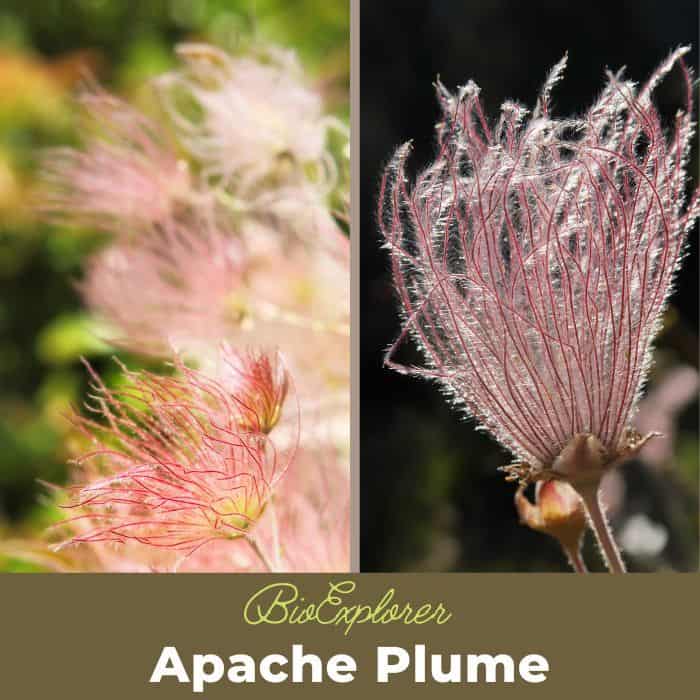
Apache Plume is a slender and upright shrub of the Rose family that can grow to 2-6 feet tall.
| Plantae | Rosales | Rosaceae | Fallugia | Fallugia paradoxa |
- Plant Type: Perennial, Deciduous Shrub.
- Common Name: Apache Plume.
- Colors: Pinkish white
- Flower Dimensions: 2 inches.
- Flowering Seasons/Months: Spring and fall (May-December).
- Deserts with Apache Plume: Mojave, Chihuahuan, Great Basin, Sonoran
Apache Plume Characteristics

- Apache Plume’s flowers are pinkish-white and attractive in combination with their dark foliage. Their leaves are about 1 cm in length.
- The flower of the Apache Plume is rose-like. The petals are rounded. The nectar from the flower commonly attracts wasps.
- The branches of the Apache plume possess light gray or whitish peeling bark.
- The fruit of Apache Plume has distinctive, pink, and feathery plumes.
Apache Plume is a hardy shrub native to the deserts of northern Mexico and the southwestern United States. It produces simple, white, five-petaled flowers that resemble small roses, followed by feathery pink seed plumes that look like a cloud.
These delicate desert plumes give the plant its name. Adapted to rocky, arid regions, Apache Plume is admired for bringing unexpected softness to harsh desert scenery. It is also popular in landscaping for xeriscaping projects due to its high drought tolerance and minimal maintenance needs.

Interesting Facts about Apache Plume

- An unidentified Penicillium sp. was isolated from the rhizosphere of the Apache Plume (F. paradoxa) during the conduction of research[1]. It was found that this fungus produces cytotoxic substances.
- According to an article[2], the growth of the Apache Plume involves many entangled branches. These branches give the plant an unkept appearance. In the desert, the Apache plume is an essential plant for soil erosion control.
- Fallugia paradoxa is called Apache Plume[3] because the feathery seed clusters resemble Indian feather headdresses.
- Apache Plume is a highly tolerant plant. It is also hardy to a temperature of negative 30 degrees.
- Apache Plume[4] is used in traditional medicine. It can promote hair growth. The roots are used for coughs, and spring twigs treat spring fever and indigestion.

Suggested Reading: Types of Flowers

Cite This Page
APA7MLA8Chicago
BioExplorer.net. (2025, May 28). Apache Plume. Bio Explorer. https://www.bioexplorer.net/plants/flowers/apache-plume/.
BioExplorer.net. "Apache Plume" Bio Explorer, 28 May 2025, https://www.bioexplorer.net/plants/flowers/apache-plume/.
BioExplorer.net. "Apache Plume" Bio Explorer, May 28 2025. https://www.bioexplorer.net/plants/flowers/apache-plume/.











